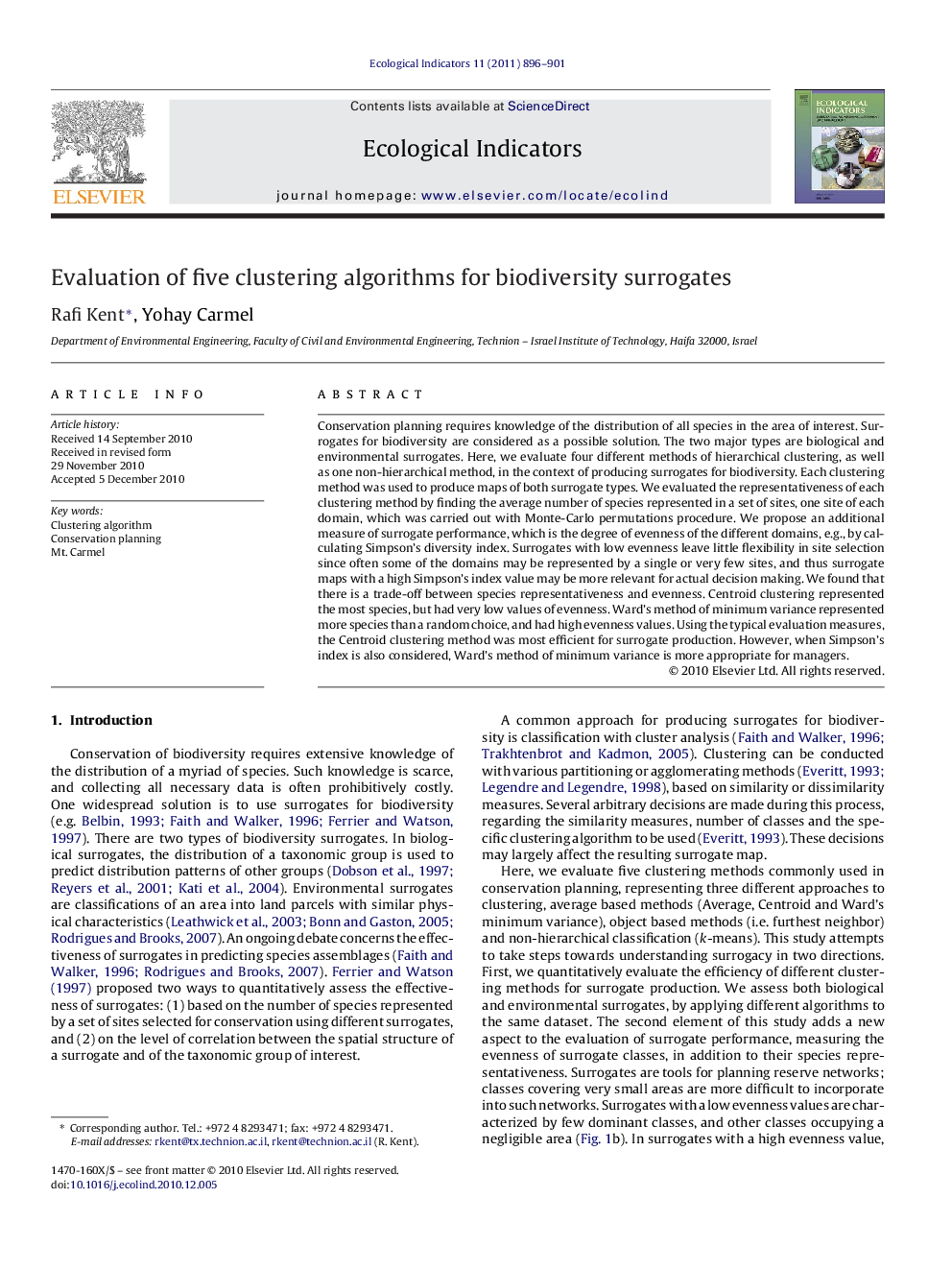| کد مقاله | کد نشریه | سال انتشار | مقاله انگلیسی | نسخه تمام متن |
|---|---|---|---|---|
| 6295695 | 1303158 | 2011 | 6 صفحه PDF | دانلود رایگان |
عنوان انگلیسی مقاله ISI
Evaluation of five clustering algorithms for biodiversity surrogates
دانلود مقاله + سفارش ترجمه
دانلود مقاله ISI انگلیسی
رایگان برای ایرانیان
موضوعات مرتبط
علوم زیستی و بیوفناوری
علوم کشاورزی و بیولوژیک
بوم شناسی، تکامل، رفتار و سامانه شناسی
پیش نمایش صفحه اول مقاله

چکیده انگلیسی
Conservation planning requires knowledge of the distribution of all species in the area of interest. Surrogates for biodiversity are considered as a possible solution. The two major types are biological and environmental surrogates. Here, we evaluate four different methods of hierarchical clustering, as well as one non-hierarchical method, in the context of producing surrogates for biodiversity. Each clustering method was used to produce maps of both surrogate types. We evaluated the representativeness of each clustering method by finding the average number of species represented in a set of sites, one site of each domain, which was carried out with Monte-Carlo permutations procedure. We propose an additional measure of surrogate performance, which is the degree of evenness of the different domains, e.g., by calculating Simpson's diversity index. Surrogates with low evenness leave little flexibility in site selection since often some of the domains may be represented by a single or very few sites, and thus surrogate maps with a high Simpson's index value may be more relevant for actual decision making. We found that there is a trade-off between species representativeness and evenness. Centroid clustering represented the most species, but had very low values of evenness. Ward's method of minimum variance represented more species than a random choice, and had high evenness values. Using the typical evaluation measures, the Centroid clustering method was most efficient for surrogate production. However, when Simpson's index is also considered, Ward's method of minimum variance is more appropriate for managers.
ناشر
Database: Elsevier - ScienceDirect (ساینس دایرکت)
Journal: Ecological Indicators - Volume 11, Issue 3, May 2011, Pages 896-901
Journal: Ecological Indicators - Volume 11, Issue 3, May 2011, Pages 896-901
نویسندگان
Rafi Kent, Yohay Carmel,